Vietnam’s Natural Beauty
Vietnam is defined by its vast stretches of lands containing rugged mountains, hilly forests, peaceful beaches, and urban centers. The reason many tourists are particularly amazed with this country is because of how harmoniously modern life and ancient traditions coexist in it. The landscape within Vietnam captures history, culture, and biology in such an unlikely package that gives this state a unique position among the most spectacular destinations in the world.
From the towering limestone karsts of Ha Long Bay to the rich plains of the Mekong Delta, the choice of natural attractions in Vietnam can be bewildering. Be it through mist-wrapped hills trekking around Sapa or just the vagaries of relaxation on the sandy shores of Phu Quoc Island, the beautiful sights of Vietnam will be certain to leave a lasting impression.
Northern Vietnam: Where Mountains and Valleys Meet
Northern Vietnam is home to some of the country’s most dramatic landscapes, filled with towering peaks, winding rivers, and lush green valleys.Ha Long Bay: A UNESCO World Heritage Site
Ha Long Bay is considered one of the most renowned natural wonders of the country and was declared a UNESCO World Heritage Site in 1994. A true highlight of Vietnam scenery, the bay covers an area of about 1,553 square kilometers and comprises nearly 2,000 limestone karst islands and islets, each uniquely shaped through millions of years of geological evolution. Most of the time, these tall limestone pillars are topped with lush rainforests, affording the bay its space-like appearance that draws millions of visitors every year.
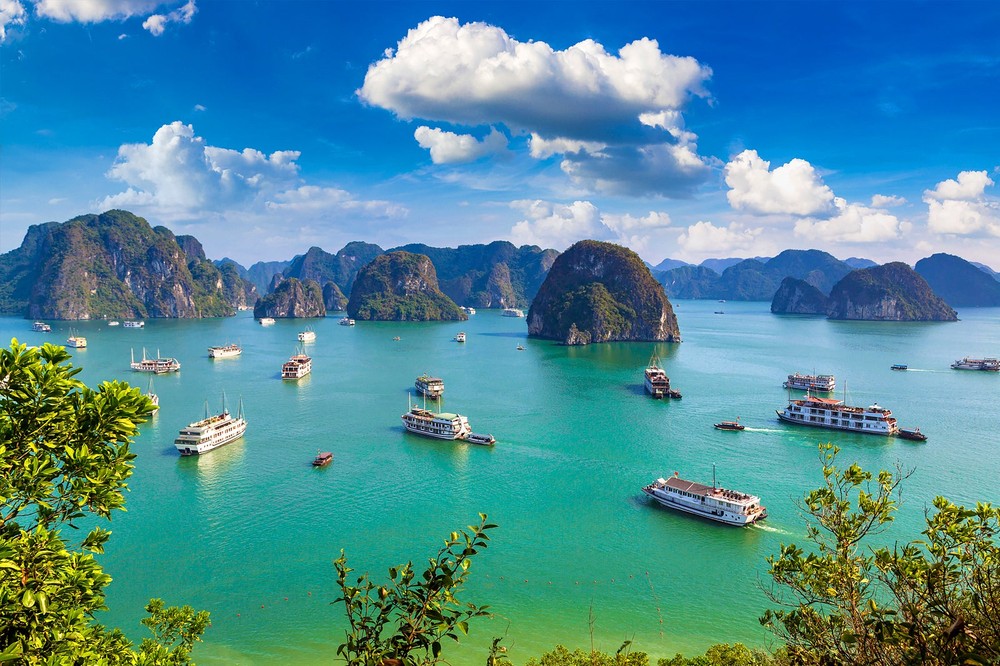
Ha Long Bay
The emerald-green waters of Ha Long Bay offer a stunning contrast to the jagged gray rock formations, creating a serene and mystical atmosphere that perfectly encapsulates the beauty of Vietnam scenery. Speaking from the perspective of fully appreciating its beauty, exploration by boat is the best option in terms of really appreciating its beauty. They come in traditional junk boats, usually with bright red sails, carrying day trips and overnight cruises. Smaller and more personalized are the kayaks that let visitors float through the narrow channels between the karsts in finding hidden lagoons, secluded beaches, and secret caves.
Sapa’s Terraced Rice Fields: A Photographer’s Paradise
Perched high on the misty mountains of northern Vietnam, not far from the border with China, Sapa boasts some of the most magnificent examples of Vietnam scenery, with terraced rice fields sprawled across its rugged hillsides. These apparently cascading giant green staircases are an architectural agricultural wonder made by the hands of ethnic minority groups from this region, notably the Hmong, Dao, and Tay. These communities, over time, have carved mountainsides into surfaces that are flat and arable for rice crops grown within the area of steep, uneven land.
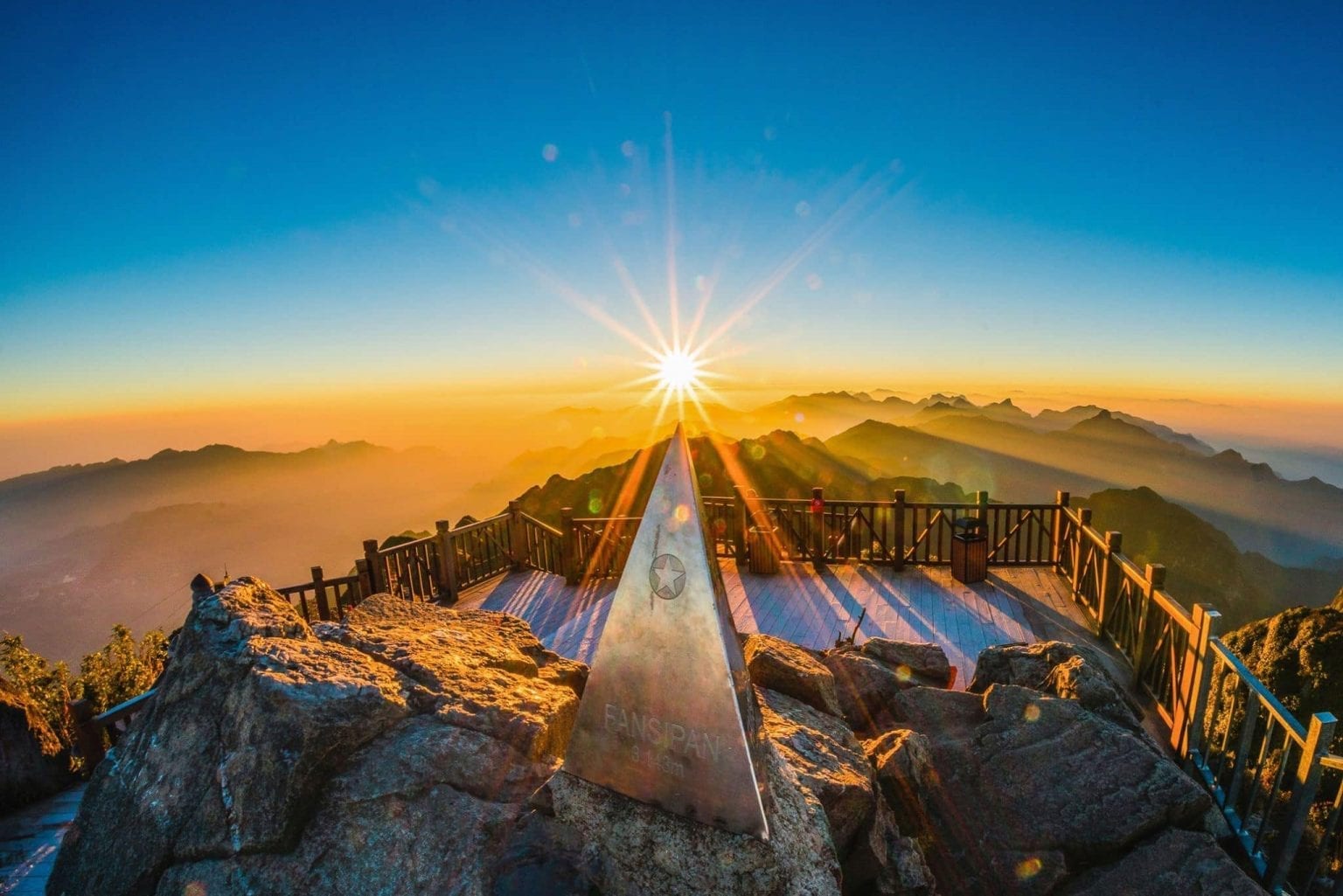
Fansipan in Sapa
Besides the Vietnam scenery, these terraced fields reveal the harmonious relationship between people and their surroundings. This is traditional farming here, done the same way their ancestors have for many generations and thus remarkably sustainable, closely linked to culture, and daily lives of Sapa’s hill tribes. More often than not, tourists happen upon farmers in the traditional garb tilling the land or water buffalo plowing the ground with barely any mechanical assistance – a very rare glimpse of a lifestyle that has fundamentally remained unchanged for several centuries.
A dream for a photographer, Sapa is an eternal number of different landscape possibilities, changing with light and seasons. From trekking down through rice paddies, atop a high vantage point, to interacting with the local farmers, there are different ways of having a unique experience in one of Vietnam’s most iconic and picturesque settings.
Ninh Binh: Ha Long Bay on Land
Sometimes referred to as “Ha Long Bay on land,” Ninh Binh is yet another breathtakingly beautiful place with its limestone karst formations springing dramatically from the rice paddies and curving rivers. Unlike in Ha Long Bay, where the Vietnam scenery is all at sea, at Ninh Binh, it was stretched over far more lands and waters, offering more panoramic and tranquil experiences within the countryside setting for visitors. As already mentioned, the Trang An Scenic Landscape Complex forms the heart of the beautiful landscape of Ninh Binh and is renowned for its complex network of caves, rivers, and temples surrounded by towering cliffs of limestone carpeted in green.
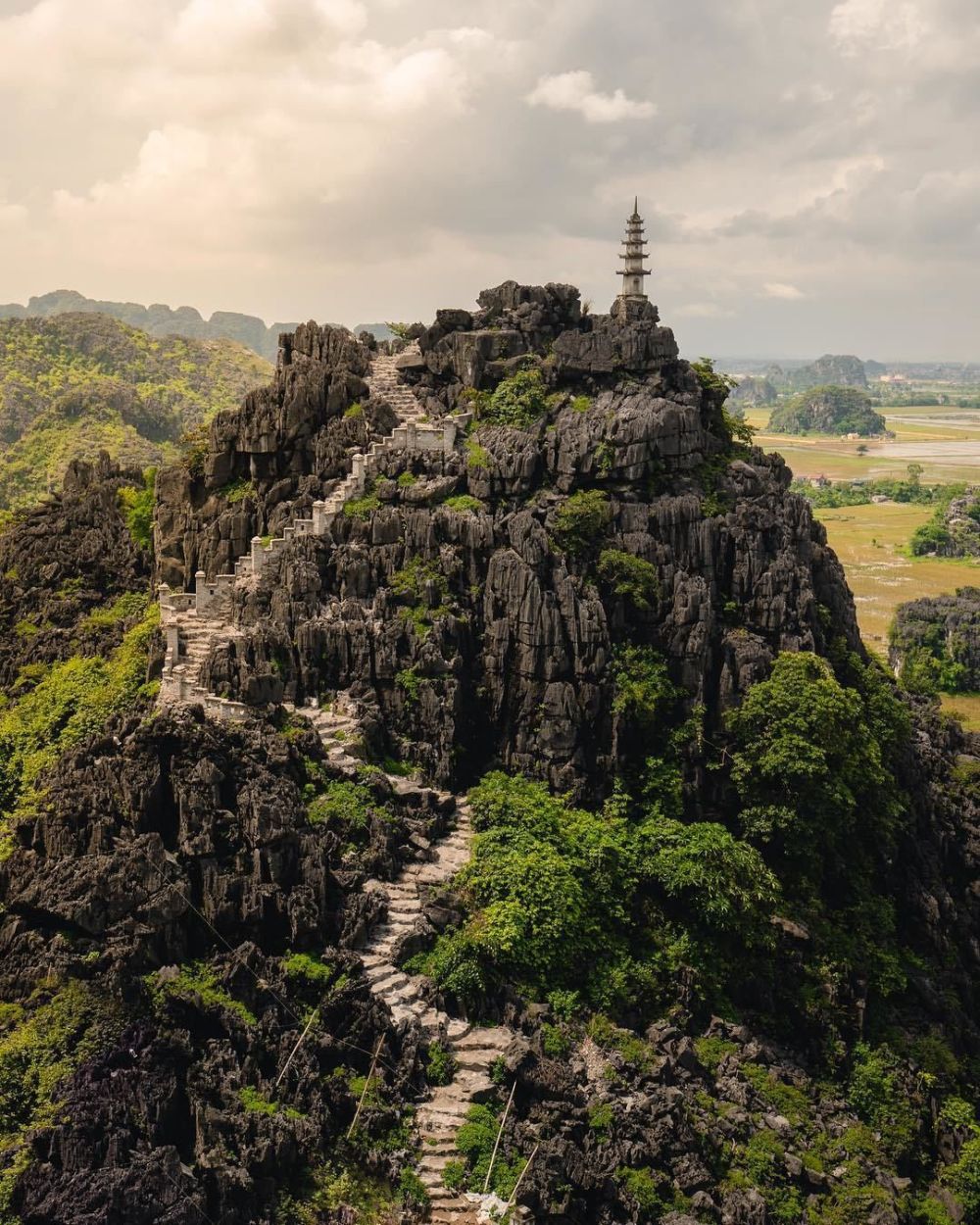
Mua Cave – Ninh Binh
More historical attractions not to be missed are the ancient capital of Hoa Lu with various ruins of temples dedicated to its country’s first emperors of the Dinh and Le Dynasties. For those who would like an even better view of the surroundings, a visit to the Mua Cave Viewpoint supplies one of the most fantastic panoramas of rice fields, meandering rivers, and limestone peaks-a view without which everything that makes Ninh Binh unforgettably beautiful would not be complete. Its heady mix of cultural heritage, natural beauty, and tranquil atmosphere makes Ninh Binh a worthy destination to visit, far less touristy than the more famous Ha Long Bay, for all lovers of nature and history.
Central Vietnam Scenery and Historical Sites
Central Vietnam boasts some of the country’s most iconic landscapes, including charming ancient towns, beautiful beaches, and UNESCO-protected historical sites.Hoi An: Ancient Charm Along the River
Hoi An is an ancient town in the Quang Nam province of central Vietnam. It boasts a number of well-preserved architectures listed in UNESCO’s World Heritage and is rich in historical importance. This was once a bustling trading port between the 15th and 19th centuries, with most of Hoi An remaining simply original and fantastically picturesque. Visitors to the old town are immediately struck by the well-preserved wooden shop houses, Chinese temples, and Japanese merchant houses that reflect a blend of Vietnamese, Chinese, and Japanese architectural styles. The most prominent landmark in Hoi An is, without doubt, the iconic Japanese Covered Bridge dated to the 16th century.
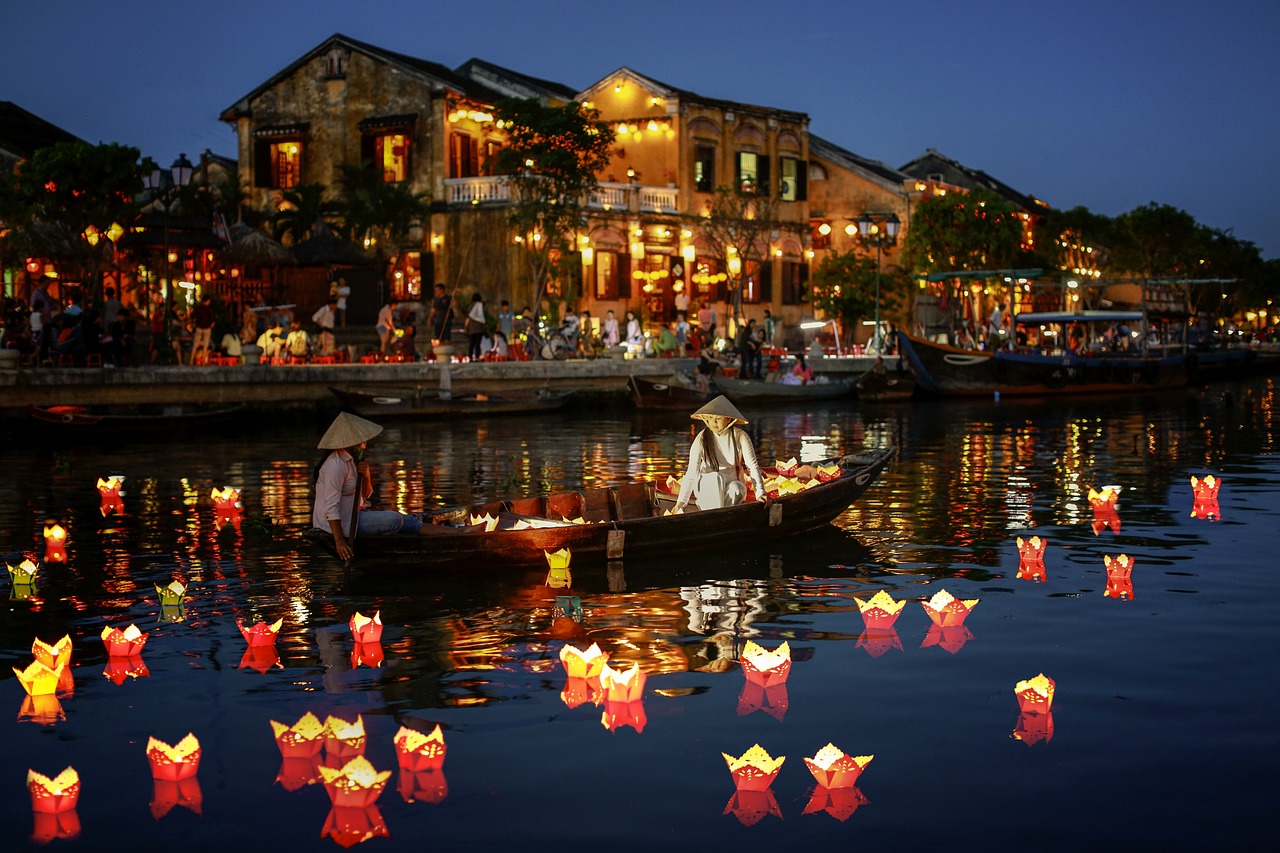
Hoi An Old Town
From looking at the centuries-worn architecture to an easy cruise down the Thu Bon River, catching the sun on Cua Dai Beach, Hoi An showcases the beauty of Vietnam scenery in a mix of history, culture, and nature rolled into one piece, making it definitely one of the destinations to see in Vietnam.
Hue: Imperial City with Majestic Scenery
Hue was the old imperial capital and is steeped in a very rich and wide array of Vietnamese history. This is complemented with an array of Vietnam scenery that makes Hue fascinatingly expressive in all ways. Hue is among many other things identified as being deeply rooted in central Vietnam and inherently tied to the Nguyen Dynasty. Its huge monuments strongly denote the passing of imperial glory. Nature has also been generous to Hue, which offers plenty of natural beauty that will complement its tranquil and aristocratic atmosphere.
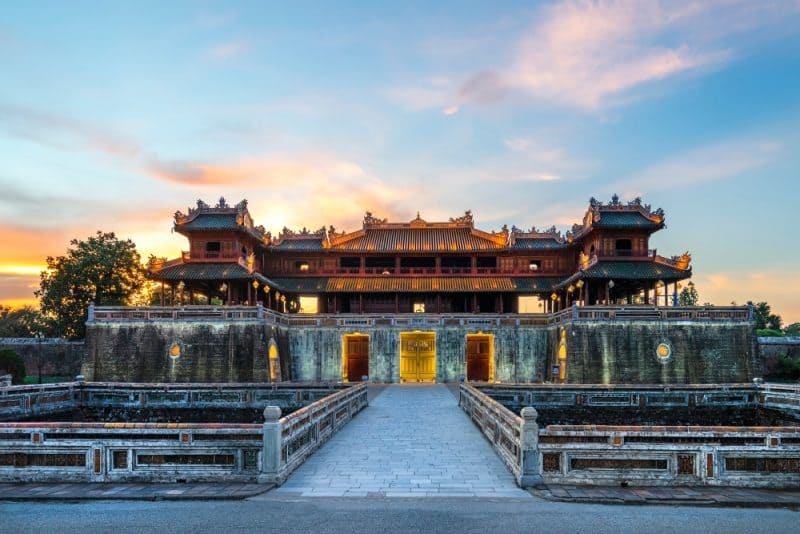
Hue Imperial City
One of the iconic features of Hue is the Huong River, which is a tranquil waterway that winds its way in grace through the heart of the city, helping to give the place its laid-back atmosphere. According to the legend, its name comes from the fragrant flowers that fall into the water from orchards upstream, which perfume it. A boat trip down the Huong River affords great views of the city’s most famous sites, including the seven-storey Buddhist temple called the Thien Mu Pagoda that overlooks the riverbanks.
Phong Nha-Ke Bang National Park: Limestone Mountains and Caves
Also known as Phong Nha-Ke Bang National Park, it is a park of geology, housing some of the most outstanding karst Vietnam scenery evolved over the last 400 million years, thereby ranking it as one of the oldest karst areas in Asia. The park spans more than 123,000 hectares, with over 300 caves and grottoes, many still not explored. It houses crown jewels such as Son Doong Cave, which is the world’s largest cave by volume and is even large enough to house a whole city block with a jungle within its vast chamber. Discovered in 2009, Son Doong attracts adventurers and researchers alike, with only limited numbers of permits granted annually to keep it in its virgin state.
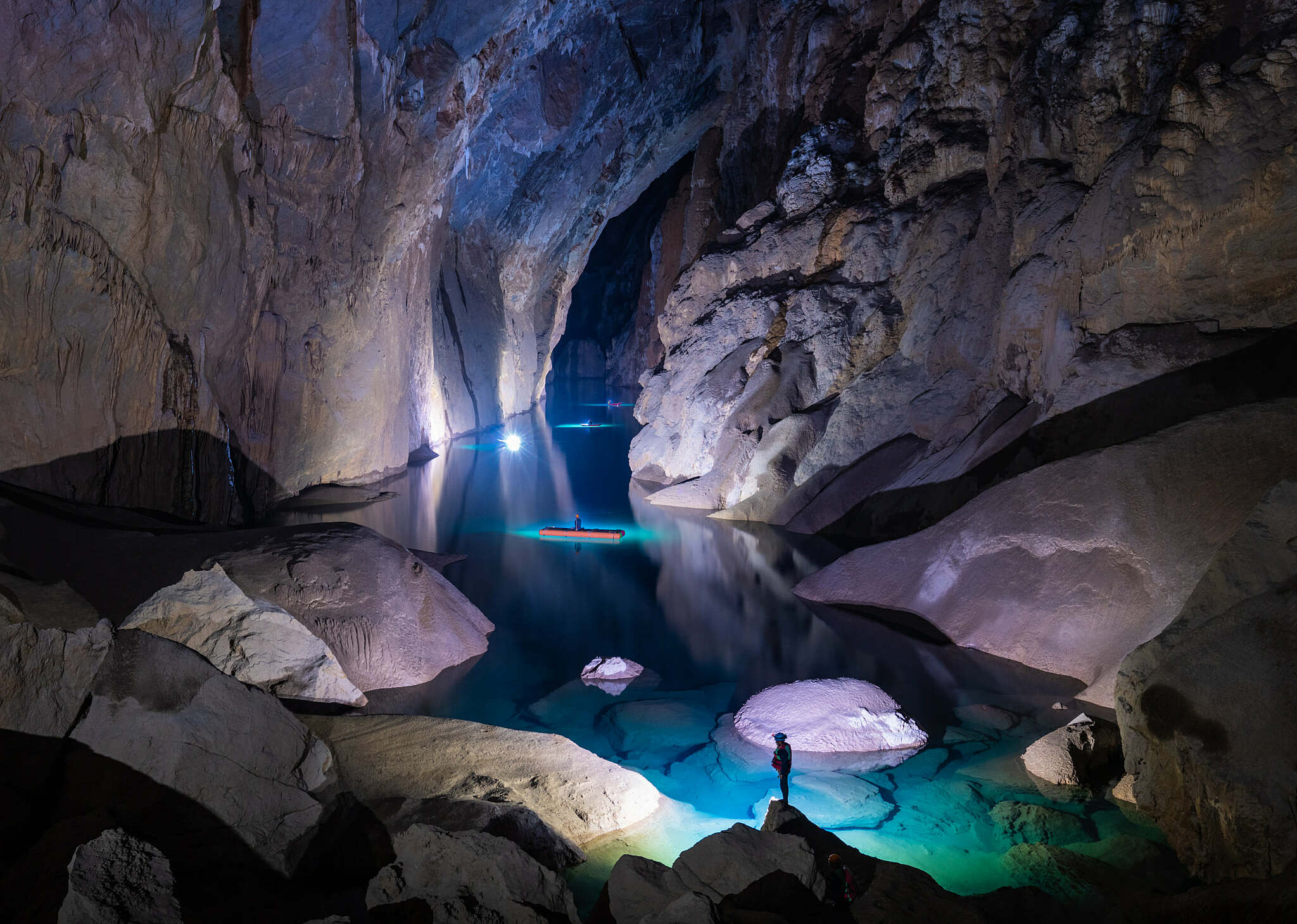
Son Doong Cave
Other than Son Doong, other popular places include Phong Nha Cave and Paradise Cave, which allow visitors to observe the grandeur of stalactites and stalagmites, rivers flowing underground, and the dramatic formations of rock. The Cave of Phong Nha can be reached by boat, which would take one on a meandering course along the Son River, where lush vegetation meets high walls of limestone. For the more adventurous, it contains trails of hikes through its dense forests, rich in biodiversity, homes of several species declared as endangered. It is also a haven for spelunkers, as guided tours are given deep into the labyrinthine networks of caves to show the beauty buried beneath the surface of the earth.
Southern Vietnam: Rivers, Deltas, and Islands
The southern region of Vietnam is defined by the sprawling Mekong Delta, tropical islands, and vibrant cities.The Mekong Delta: A Waterway Wonderland
Commonly known as the “Rice Bowl of Vietnam,” the Mekong Delta is a considerable area in south Vietnam scenery, at around 15,000 square miles. This vast network of rivers, swamps, and low-lying islands houses millions of livelihoods and is one of the country’s most agriculturally productive regions. The delta is known above all for its endless rice paddies, but also for a wide array of tropical fruits, seafood, and flowers, which makes it an important part of Vietnam scenery and economy.
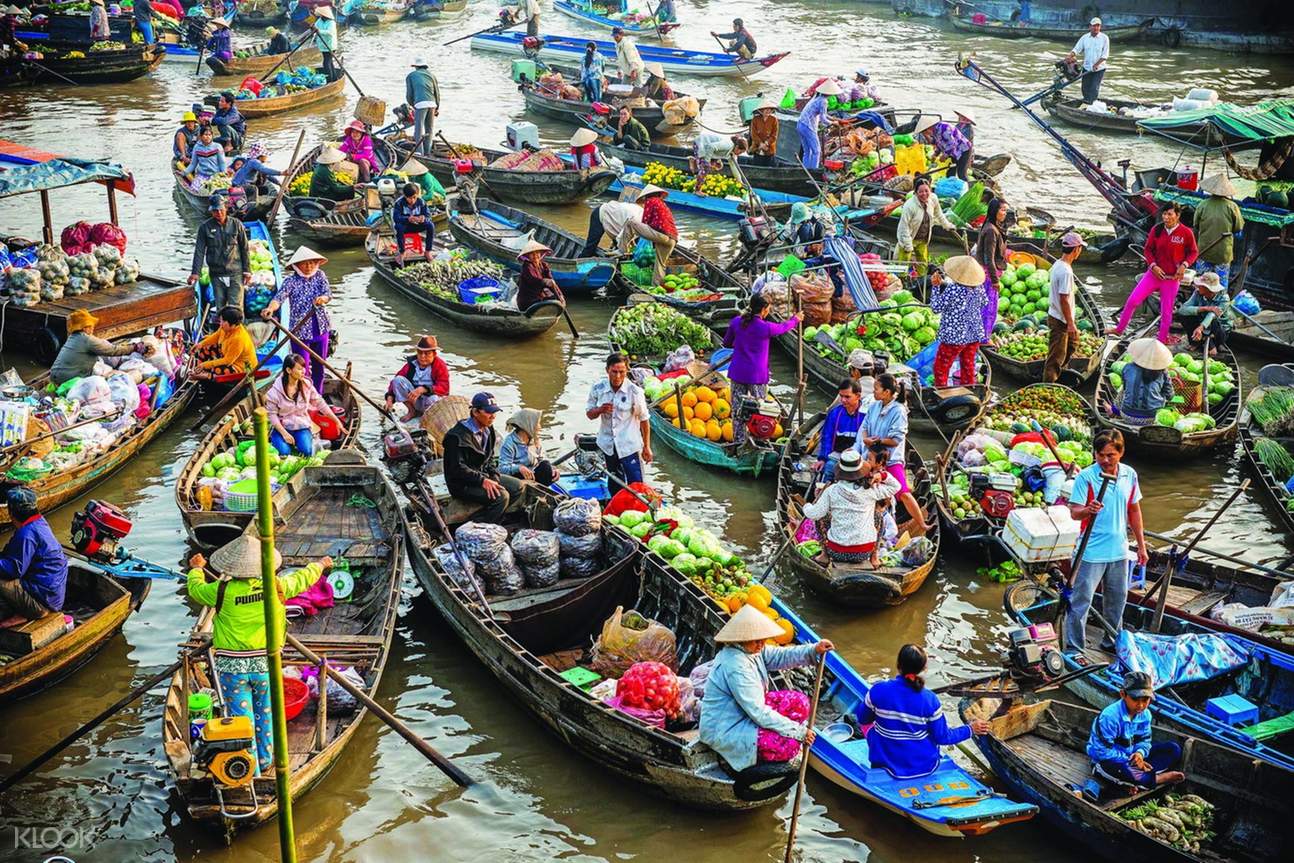
Floating market in Mekong Delta
Visitors can take boat tours through the labyrinth of waterways in the delta to see its famous floating markets-Cai Rang and Cai Be are good examples-where locals sell fresh produce right off their boats. Besides the markets, quaint orchards filled with exotic fruits, such as mangoes, rambutans, and durians, will be full of travelers snacking fresh from the source. Other bucolic charms include traditional villages down the canals where the visitors may observe age-old customs like making rice paper and coconut candy. Homestays with local families give great insights into the rhythms of daily life in the delta, where time seems almost to stand still as it works its passage in harmony with the lazy flow of the river.
Phu Quoc Island: Tropical Paradise in the Gulf of Thailand
Phu Quoc Island is the biggest island in Vietnam scenery, offering a haven of tranquil paradise for people who enjoy beaches and the stunning Vietnam scenery. Its pristine white-sand beaches, lined with palm trees and facing turquoise water, include Long Beach and Sao Beach, providing an ideal retreat for sunbathing and swimming. In addition to the coastline, Phu Quoc also includes thick jungles-mostly in the Phu Quoc National Park-where one can take treks through the very dense forests and behold rare wild animals like hornbills and macaques. Vibrant marine life makes it one of the best snorkeling and diving locations with breathtakingly beautiful coral reefs around the An Thoi Archipelago. For the adventurous, it offers water sports kayaking and jet skiing, while night markets are bursting with fresh seafood. Phu Quoc is simply perfect; it offers everything from nature and beauty to great activities that can be done.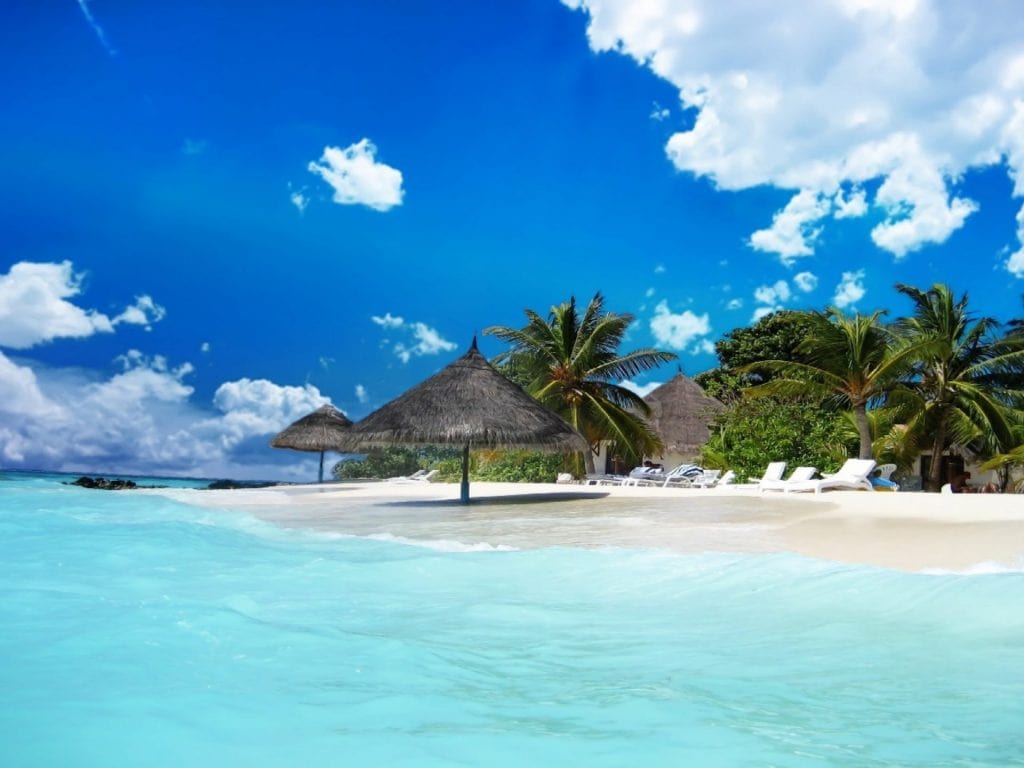
Sao Beach in Phu Quoc
Ho Chi Minh City: Urban Beauty Meets Historical Depth
Ho Chi Minh City, better known as Saigon, represents a city of intriguing contrasts where new and old are mixed. On the back of its dynamic, bustling urban vibe are tranquil oases and charm. Tree-lined streets around Tao Dan Park and 23/9 Park function as green oases for respite, while evening takes on an altogether romantic hue with the Saigon River, with its riverside promenades a real treat to take in. Features of its rich history are in the architecture: Notre-Dame Cathedral Basilica with its red-brick façade, the grand Saigon Central Post Office by Gustave Eiffel, shows French colonial elegance, while modern skyscrapers such as the Bitexco Financial Tower give the skyline a touch of futurism. History buffs will enjoy a slew of landmarks, including the Reunification Palace, which played an important role at the end of the Vietnam War. Every nook and corner of Ho Chi Minh City carries some unique blend of cultural heritage and rhythmic vibrancy, contributing to the diverse Vietnam scenery that draws in countless visitors each year.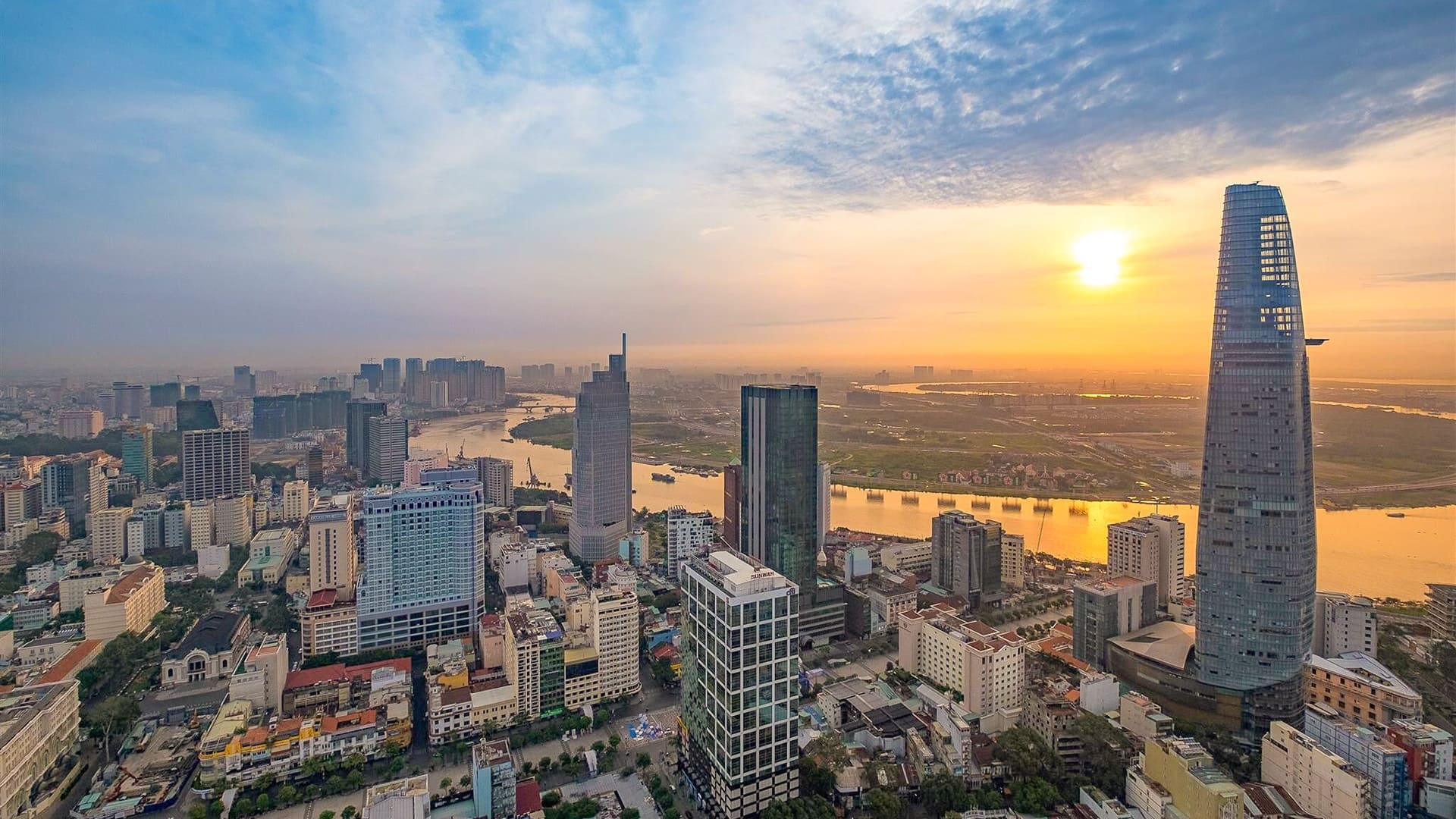
Sai Gon Scenery
Why Vietnam Scenery Attract Global Attention
Indeed, Vietnam scenery is a marvelous combination of nature, culture, and ecology, which attracts tourists worldwide. The primary and most important reason for such broad appeal is that it offers diversified landscapes in a comparatively small geographic area. From the emerald waters and towering limestone karsts of Ha Long Bay to the vibrant, terraced rice fields in Sapa, each region presents a different yet unforgettable visual encounter. These iconic views have graced international box-office films like Kong: Skull Island, amplifying global recognition.
Besides the picturesque beauty, Vietnam scenery also carry immense cultural meaning. The historical depth of sites, such as Phong Nha-Ke Bang National Park with its giant cave systems and the former imperial capital of Hue, which is situated on the dreamy Huong River, comes along with the natural beauty. This is a place that stands in balance with natural beauty, enriched with the history of the country; thus, it appeals both to lovers of nature and to cultural enthusiasts alike.
Furthermore, the landscapes dominated social media platforms as millions of posts showed these breathtaking vistas, further fueling the growing interest in travel to the country. This good combination of diversified beauty and cultural richness coupled with online visibility means Vietnam scenery ranks high as a destination globally.
